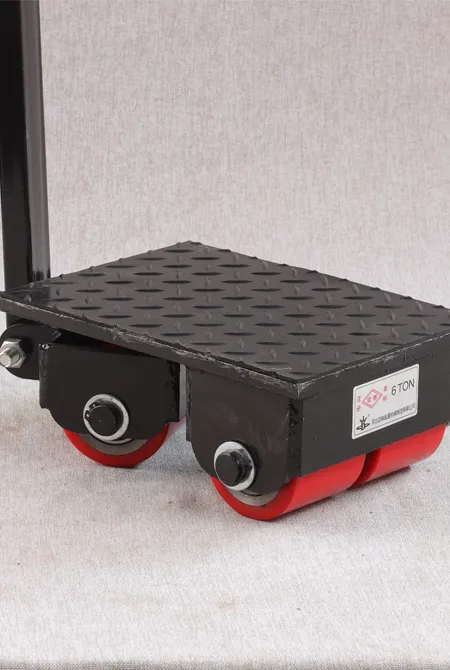monorail overhead crane
Understanding Monorail Overhead Cranes A Comprehensive Guide
Monorail overhead cranes have revolutionized the way industrial operations manage material handling. Combining efficiency, flexibility, and safety, these cranes are a staple in various sectors, including manufacturing, construction, and warehouse operations. This article delves into the intricacies of monorail overhead cranes, their design, applications, and advantages.
What is a Monorail Overhead Crane?
A monorail overhead crane operates on a single rail, typically elevated above the ground. Unlike traditional overhead cranes, which may have two rails, the monorail system uses a single track to facilitate the movement of loads. This design minimizes the required space for installation and operation, making it an advantageous choice for many environments.
Components of a Monorail Overhead Crane
The key components of a monorail overhead crane include
1. Monorail Track The single rail that supports the crane and allows for horizontal movement. 2. Hoist The device used to lift and lower loads. It can be electric or manual, depending on the requirements of the operation. 3. Trolley A mechanism that moves along the monorail, carrying the hoist and allowing for lateral movement. 4. Control System This includes remote controls or pushbutton stations that enable operators to manage the crane's movements safely.
Each of these components plays a critical role in the crane's functioning and operational efficiency.
Applications of Monorail Overhead Cranes
Monorail overhead cranes find applications in various industries. Some prominent sectors include
- Manufacturing They are invaluable in assembly lines where components need to be moved from one workstation to another quickly. - Warehousing In warehouses, these cranes facilitate the loading and unloading of goods, enabling effective inventory management. - Construction Used for transporting materials across construction sites, monorail cranes enhance productivity and safety. - Automotive Industry They assist in assembly processes, providing a streamlined flow of parts and materials.
monorail overhead crane

Advantages of Monorail Overhead Cranes
1. Space Efficiency Since monorail cranes require less vertical and horizontal space compared to their traditional counterparts, they are perfect for environments with limited room. 2. Cost-Effective The design and installation of monorail systems can be more economical due to reduced material and labor costs.
3. Flexible Design Monorail systems can be designed to follow various layouts and configurations, allowing them to adapt to the specific needs of a facility.
4. Ease of Operation Operators find monorail cranes relatively easy to use, and they can often be operated by a single person, increasing operational efficiency.
5. Safety With fewer moving parts and a focused load path, monorail cranes can enhance workplace safety significantly.
Considerations for Implementation
While monorail overhead cranes offer numerous benefits, there are several factors to consider when planning their installation
- Load Capacity Assess the maximum load that the crane will need to handle to choose the appropriate hoist and trolley system. - Installation Environment The size and layout of the facility will dictate whether a monorail system is feasible and how it should be configured. - Workplace Safety Ensure comprehensive safety measures are in place, including operator training, maintenance protocols, and safety equipment like rail guards.
Conclusion
Monorail overhead cranes represent a cutting-edge solution for efficient material handling across various industries. With their space-saving design, cost-effectiveness, and operational flexibility, they have become essential tools in modern industrial contexts. As businesses continue to seek ways to optimize their operations, the monorail overhead crane stands out as a key player in driving productivity and safety forward. By understanding their components, applications, and advantages, industrial operators can make informed decisions about integrating these systems into their workflows.
-
Dawei Hand Pallet Truck 1200mm, 2000–5000 KGS Heavy-DutyNewsNov.17,2025
-
Dawei Hand Pallet Truck, Fork Length 1200mm, 2000–5000kgNewsNov.17,2025
-
Large Equipment Movers – Safe, Insured & On-Time ServiceNewsNov.17,2025
-
Machine Moving Dollies | Heavy-Duty, Low-Profile, SafeNewsNov.17,2025
-
Permanent Lifting Magnet - Heavy-Duty, Safe, Quick ReleaseNewsNov.11,2025
-
PML 1000 Lifting Magnet - Heavy-Duty, Safe, No PowerNewsNov.11,2025
-
Large Equipment Movers: Safe, Fast, Certified ProsNewsNov.11,2025
